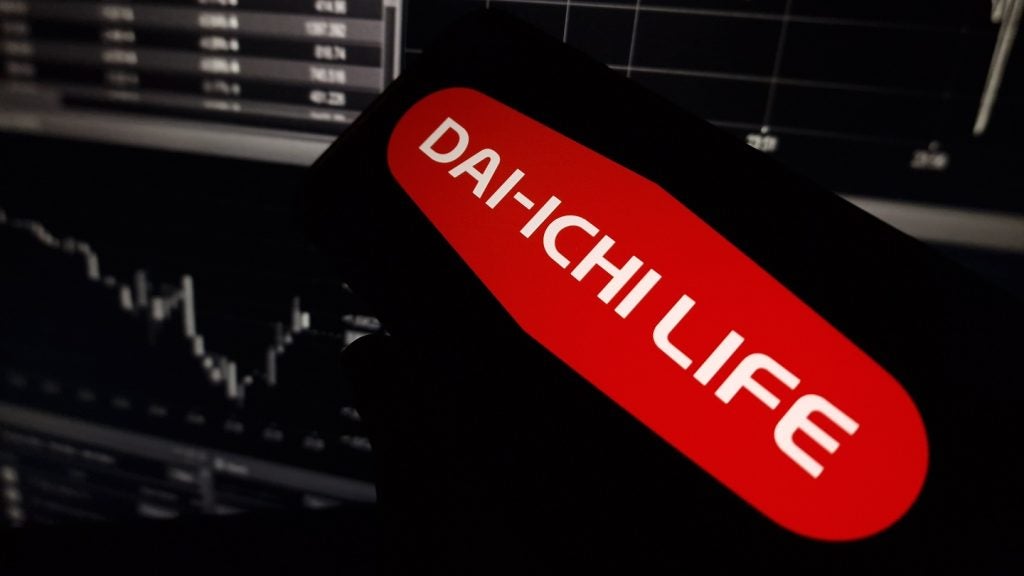Industry Attractiveness
The Finnish economy is currently in recession. Finland is considered an unattractive market for non-Nordic insurers contemplating entry into the country’s insurance industry due to its relatively small size, high concentration, and protection extended to local insurers. The prevalence of low interest rates in the country also act as a barrier to the insurance industry’s growth, eroding margins on guaranteed return products and resulting in subdued book yields. However, except for 2011, the Finnish insurance industry registered steady growth between 2008 and 2012 and is forecasted to continue up until 2017.
Insurers in Finland can offer non-life insurance products as a package, along with personal accident and employee-benefits policies, which are mandatory. The objective is to compensate for the losses incurred on non-life policies by offsetting them against the profits from personal accident policies and employee benefits – categories that are dominated by local companies.
The EU (European Union), of which Finland is a part, is at an advanced stage of implementing regulations to provide greater clarity to consumers about the fees they are being charged, the product costs, and the risks they would be exposed to. Some of these regulations are the Markets in Financial Instruments Directive (MIFID II), Packaged Retail Investment Products (PRIPs), and the Insurance Mediation Directive. This greater transparency will be an increased burden to insurers, PRIPs, for instance, make the issuance of a key information document (KID) to customers mandatory, before they buy a policy.
The life segment grew at a CAGR of 5.9% as a result of increased demand for voluntary pension schemes, and the aging population. The non-life segment, which constituted 16.2% of the total insurance written premiums, recorded a CAGR of 2.0% between 2008 and 2012. This growth was mainly driven by growth in motor insurance products.
The personal accident and health segment accounted for the smallest market share of 2.0% in 2012, as Finland has a well-developed welfare system with universal healthcare and wide social security cover. The demand for private healthcare has been rising however, partly due to its high quality and partly due to the supply deficit in public healthcare, as evidenced by long queues. The value of the personal accident and health segment increased marginally from EUR279.0 million (US$408.7 million) in 2008 to EUR390.9 million (US$502.5 million) in 2012, at a CAGR of 8.8%.
The life segment is expected to grow at a CAGR of 5.1%, to reach a value of EUR20.9 billion (US$26.7 billion) by 2017, while the non-life segment is projected to reach EUR3.7 billion (US$4.7 billion), after growing at a CAGR of 2.6%. The personal accident and health segment is expected to record a CAGR of 8.4%, to reach a projected value of GBP584.0 million (US$745.4 million) in 2017. Growth in all segments is expected to be driven by the rising per capita annual disposable incomes, the aging population, and the provision for insurers to sell non-life insurance products, in combination with mandatory employee benefits and personal accident policies.
Segment Outlook
The life segment is the largest in the Finnish insurance industry, accounting for 81.8% of the gross written premium in 2012. Life insurance penetration increased from 7% in 2008 to 8.4% in 2012, and is expected to reach 9% by 2017. Overall, the life segment recorded a CAGR of 5.9% between 2008 and 2012, despite the Finnish economy being adversely impacted by the eurozone crisis. The gross written premium registered by the life segment is expected to increase from EUR16.3 billion (US$20.9 billion) in 2012 to EUR20.9 billion (US$26.7 billion) in 2017, at a CAGR of 5.1%.
The Finnish life segment is highly concentrated, with the top three companies accounting for 78.4% of the premium income in 2012. Nordea Life Plc was the largest company with a 30.8% segment share in 2012, followed by Mandatum Life with 24.6%.
Although the Finnish life insurance segment is not particularly large, it registered significant growth in premium income of more than 17% in 2012 over 2011. According to the Federation of Finnish Financial Services (FFFS), a trade body representing Finnish financial services companies, the number of new personal pension policies increased from 7,708 in 2011 to 13,398 in 2012.
New personal pension policies are expected to record a higher growth rate over the coming years. Pure risk policies, which registered an increase in written premiums of more than 6.8% from 2011 to 2012, will record a higher percentage increase in written premiums up to 2017. Written premiums for voluntary group pension and employees’ group life insurance will also grow during 2012-2017.
With low interest rates offered on government bonds, there has been a decrease in both demand for and supply of guaranteed-return policies. In 2012, the premium amount collected for guaranteed-return policies accounted for around 50% of the overall premium income collected.
In 2012, the life insurers’ solvency ratio was more than 23% higher than requirements, on account of potential payouts to policyholders. Poor returns on investments offset much of this margin, however. According to FFFS, life insurers’ overall solvency capital rose by 30% to more than EUR5.9 billion. According to FFFS, there was an increase in the solvency margin and the solvency margin was 440% more than that stipulated by the Insurance Companies Act (the highest among the amount derived from a complex mathematical formula which takes into account various factors of life insurance and EUR3.2 million (US$4.2 million).
However, foreign insurers seeking an entry into the Finnish life insurance segment have to keep in mind that the country’s insurance industry is comparatively protected and foreign life insurers in the segment have limited market share.
Distribution Channels
The distribution network for life insurance products in Finland primarily comprises bancassurance, direct marketing, insurance brokers and agencies.
As is the case with several European nations, bancassurance is the key distribution channel for the life insurance segment in Finland; the channel accounted for 54.2% of the total commission paid to distribution channels in 2012. The value of new business gross written premium collected through the channel decreased from EUR839.2 million (US$1.2 billion) in 2008 to EUR780.2 million (US$1 billion) in 2012. This value is projected to reach EUR913.1 million (US$1.2 billion) by 2017. Bancassurance accounted for 54.3% of new business gross written premium in 2012, which is expected to increase marginally to 54.6% by 2017.
Direct marketing mechanisms, such as distance sales and sales by employees, followed bancassurance in terms of new written premium generated in the life segment in 2012. Direct marketing registered a CAGR of -1.4% between 2008 and 2012. It accounted for 31.9% of the new business gross written premium in 2012. This is expected to increase to 33.5% by 2017.
The market share of brokers was 8.1% in 2012. Written premium through brokers is expected to record a CAGR of -2.8%, reducing its market share to 6.0% in 2017. Commission payments to brokers are prohibited in Finland, to ensure that brokers act as impartial advisors; retail customers pay a fee negotiated with brokers for advice and other services provided. For policies sold by brokers, insurers use the net quoting system, in which insurers account for services provided by brokers and do not load administrative, advertising or other overheads into pricing. As a result, prices tend to be lower through brokers than through insurers’ sales personnel or agents.
The market share of agencies was 3.1% in 2012. The written premium through agencies is expected to record a CAGR of 3.7%, pushing its market share marginally up to 3.3% in 2017.
Despite a high level of internet penetration, e-commerce constituted a very small proportion of the overall new business gross written premium, with a 1.4% share in 2012. Finns mainly use the internet to research prices and product features of different insurers, rather than purchase insurance online. The new business gross written premium through e-commerce is expected to record a CAGR of 4.6%, the strongest growth among all distribution channels, resulting in a market share of 1.5% in 2017.
How well do you really know your competitors?
Access the most comprehensive Company Profiles on the market, powered by GlobalData. Save hours of research. Gain competitive edge.

Thank you!
Your download email will arrive shortly
Not ready to buy yet? Download a free sample
We are confident about the unique quality of our Company Profiles. However, we want you to make the most beneficial decision for your business, so we offer a free sample that you can download by submitting the below form
By GlobalDataPorter’s Five Forces Analysis
The Finnish life insurance segment is highly concentrated, with the top three companies in the segment accounting for 78.4% of the premium income in 2012. Because of the protection extended to Finnish insurers, there is a little possibility of new non-Nordic insurers entering the segment. Nordea Life led the segment with a 30.8% share, followed by Mandatum Life with 24.6%.
Bargaining power of supplier: Medium
The top three companies in the Finnish life segment accounted for 78.4% of premiums in 2012, an indicator of a highly concentrated market. Furthermore, the popularity of voluntary personal and group pension schemes among Finns raises the bargaining power of life insurers, although this is moderated by the EU’s steps to increase transparency in pricing. The bargaining power of insurers is also moderated by the elasticity of demand. For instance, the premium rates charged by life insurers in 2010 were high, particularly in group pensions and capital-redemption contracts with single premiums. This resulted in a reduction in demand and decline in the gross written premium in 2011.
Bargaining power of buyer: Low to medium
The huge share of the life segment held by the market leaders, coupled with a limited number of companies operating in the segment, limits buyer bargaining power. However, customers have become increasingly discerning by using the internet to compare product features and prices of different insurers. The increasing proliferation of price-comparison websites has also increased the bargaining power of buyers of life insurance.
Barriers to entry: High
Given the limited size of the Finnish life insurance segment, and the firm grip held by its leaders, it is relatively difficult for new non-Nordic insurers to establish themselves. There is also a perception that local insurers are protected by the government, creating an inherent disadvantage for new non-Nordic entrants into the Finnish life segment.
Intensity of rivalry: Medium to high
The intensity of competition is high among the top three life insurers, given their relatively similar market shares. Beyond the top three, levels of competition tend to be intense as there are limited chances of their exiting the market. Foreign insurers not present in Finland may not find the market attractive enough to purchase shares of smaller life insurers.
Threat of substitution: Low
There are no substitutes for pure risk policies, unit-linked plans and capital-redemption plans, which are increasingly proving to be popular in the Finnish life insurance segment.







